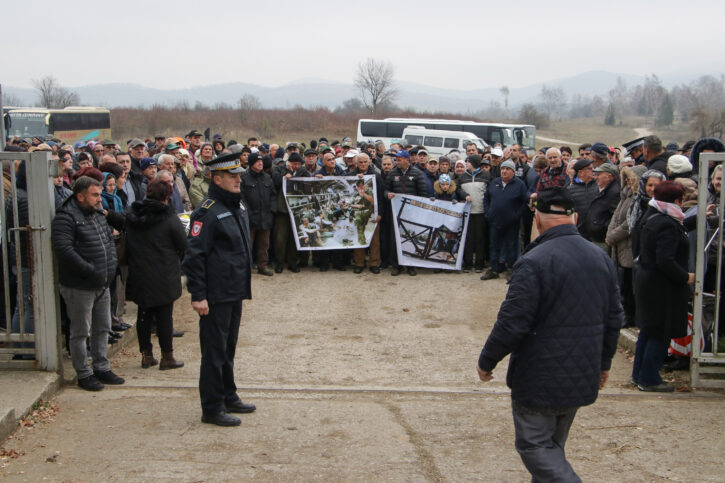
Association of War Prisoners of Bosnia and Herzegovina, former war prisoners and their families laid the flowers on Saturday in memory of those killed in the Manjaca concentration camp near the northern city of Banja Luka.
Jasmin Meskovic, head of the association, said it was about time to start talking about the system of formation of concentration camps, about the system of planning and executing the crimes.
According to him, there is no precise information on how many persons were kept in this or any other camp in the country.
“Manjaca concentration camp was active from 1991, then in 1992 and 1995, and according to the many testimonies, the last war prisoners left the camp in January 1996. Around 5,000 detainees passed through Manjaca camp,” said Meskovic, adding that despite the lack of precise data on the number of prisoners there were many testimonies and pieces of evidence speaking of their suffering.
Manjaca camp was formed on the military training ground on the Mt. Manjaca in 1991 and it served to keep the Croatians captured in the war zones of Croatia in the early 1990s. After the war broke out in Bosnia and Herzegovina, the Bosnian Serb armed forces, who ran the camp, kept there the Bosniaks and the Croats from the northern and northwestern parts of Bosnia.

Rasim Kovacevic from the northwestern town of Buzim, passed through 18 concentration camps during the 1992-95 Bosnian war. He was kept at the Manjaca camp for eight days.
“People were tortured, beaten. They were devastated, they didn't eat, the food was totally bad,” Kovacevic recalled.
Head of the Regional Union of Association of War Prisoners in the Banja Luka region, Mirsad Duratovic, spent three weeks in the camp.
“As a juvenile, I was first used as a human shield of the Serb army and police in the ethnic cleansing of my home village Biscani near Prijedor. My 15-year-old brother was killed in that human shield,” said Duratovic, who eventually managed to leave the country and flee to Germany.
“This is something that stays in you forever, no matter how hard you try to let it go – there is no way to do that,” he added.
The International Court of Justice (ICJ) presented a ruling on February 26, 2017, treating the Bosnian genocide case, in which it examined the atrocities committed in detention camps including Manjaca.
“Having carefully examined the evidence presented before it, and taken note of that presented to the ICTY, the Court considers that it has been established by fully conclusive evidence that members of the protected group were systematically victims of massive mistreatment, beatings, rape and torture causing serious bodily and mental harm during the conflict and, in particular, in the detention camps,” said the judgement.
Some of the Bosnian Serbs responsible for running the camp were indicted for genocide, crimes against humanity and war crimes, including Milomir Stakic and Stojan Zupljanin. Stakic was sentenced to 40 years in prison before the International Criminal Court for Former Yugoslavia (ICTY), while Zupljanin is serving a 22-year prison sentence.




